Tom's Guide Verdict
Although IPVanish isn't a market leader, it still packs an impressive amount of features and robust security, as well as unlimited simultaneous connections. This old-school favorite is quick, reliable, and unblocks plenty of streaming services—making it hard not to recommend.
Pros
- +
Impressive speeds with WireGuard
- +
Secure kill switch
- +
Plenty of features
- +
Unblocks Netflix US and UK, Prime Video, BBC iPlayer
- +
Unlimited simultaneous connections
- +
Audited no-logs policy
- +
Live chat and phone support
Cons
- -
Cannot unblock Netflix Canada and Disney Plus
- -
Some usability issues
- -
Pricing plans on the expensive side
Why you can trust Tom's Guide
1. Specs
2. 1-minute review
3. Latest updates
4. Price
5. Privacy
6. Speed
7. Streaming
8. Torrenting
9. Settings
10. Desktop apps
11. Mobile apps
12. Support
13. Verdict
The US-based provider showed some improvement in our latest IPVanish review and is definitely worthy of being considered as one of the best VPN services. Thanks to additional or improved security features, more unblocked TV streaming services, and a shiny new interface, it's got pretty much every base covered.
The VPN has a relatively broad network of more than 2,000 servers in 90+ locations, and over 40,000 shared IPs. These servers are spread across high-demand areas like the US, UK, and Australia, and IPVanish claims that they're all P2P-friendly. I was able to confirm this by successfully downloading torrents from five different locations.
On top of decent privacy and security tools, which have been independently audited, IPVanish bundles VIPRE, a good antivirus program, to give you additional protection against malware.
IPVanish handed over user logs to the FBI a few years ago. This caused consumers to question just how seriously the company takes user privacy, and it saw a dip in use and confidence as a result. As part of my review, I look to see if there have been any changes or if you should still proceed with caution when considering IPVanish.
Overall, IPVanish has a great list of features (and some you won't find with other providers) that keep getting bigger and better with each update. So, keep reading, and we'll dig into every facet of the VPN.
IPVanish on paper
| Number of servers | 2,000+ |
| Server countries | 90+ |
| Supported platforms | Windows, macOS, Linux, Android, iOS, Amazon Fire Stick, Android TV, Chrome OS, Kodi, Apple TV |
| Simultaneous connections | Unlimited |
| Split tunneling | Windows, macOS, Android, iOS, Fire TV |
| Kill switch | Yes |
| Protocols supported | WireGuard, OpenVPN UDP & TCP, L2TP/IPSec, IKEv2, PPTP |
| Country of registration | USA |
| Support | Articles, FAQs, email, live chat, toll-free phone support |
IPVanish 1-minute review
You can try out IPVanish for $11.99 per month. This is on the pricier side for VPN services but also isn't totally unexpected for a month-to-month subscription. However, you'll get a really good discount and deal if you commit to a full year.
IPVanish is usually only $44.99 for the first-year subscription. This averages out to about $3.75 per month, although some seasonal sales can drop this number much lower – and Tom's Guide readers can grab it for just $2.49 a month. The biggest caveat, though, is that it jumps up to $89.99 on renewal. So, keep an eye on our VPN deals for any bargains.
With IPVanish, you can enjoy unlimited simultaneous connections—there are no limits on how many devices can be connected at any one time. This is great value for money (especially as other providers tend to limit users to around 5 devices), although I suspect the provider may get in touch if you reach 50 simultaneous connections!
IPVanish has always had a lot of good security options, like DNS leak protection and a reliable kill switch, but it has bumped up my overall confidence in its security by undergoing an independent audit of its anti-logging policy.
Speed, while connected to both WireGuard and OpenVPN, increased slightly since the last round of testing. While it doesn't rank among the fastest VPNs, it's still faster than many competitors with top speeds of 770 Mbps when using WireGuard. OpenVPN speeds also slightly increased last time I checked, from 180 to a maximum of 230 Mbps.
IPVanish has bumped up my overall confidence in its privacy ability thanks to an independent audit of its anti-logging policy.
When it comes to TV streaming, IPVanish is an excellent choice because it unblocks most Netflix services, BBC iPlayer, and Disney+, alongside Amazon Prime Video, ITV, All4, and 9Now. There are a few services that remain locked, however, including Netflix Canada and Australia, and 10Play.
P2P support is a blast, though, and the SOCKS5 setup, kill switch, and full server compatibility make it a great choice as a torrenting VPN.
Currently, IPVanish offers apps for Windows, Mac, Android, iOS, as well as Amazon Fire TV and Apple TV. If you're a Linux or Chromebook user, or want to get the VPN set up on your router, there are plenty of guides available on the IPVanish support center.
The IPVanish desktop home screen and mobile app recently went through a redesign, and are now much easier to navigate thanks to a variety of interface options, tons of data at your fingertips, and quick access to settings. The level of detail here might be somewhat complex for less-experienced users, however.
Since our last review, IPVanish has also improved its streaming capabilities (now providing access to Netflix Japan) and added support for new payment types (including Google Pay, Apple Pay, Amazon Pay, and S€PA). First-time mobile users also have the chance to take the VPN for a test drive with a free 7-day trial.
Lastly, IPVanish's customer support seems comprehensive, with plenty of how-to guides and helpful live chat service—and even a free phone number that's available during office hours. If you need support and don't want to wait, there's also a superb 24/7 live chat service.
All in all, IPVanish is a powerful VPN that's only let down by a couple of minor issues. And if you can catch it at a discount price, it can offer good value for money, too.
▶ Click to head straight through to the IPVanish website
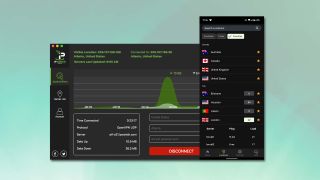
Latest updates
- Expanded slipt tunneling feature across more platforms
- Added Threat Protection tool, an ad/ malware/ tracker blocker
- Released dedicated Apple TV app
- Independent audit of no-log policy
- Updates to apps including a new interface
- Create a Favorites list and contact Support from the app
- Unblocks more TV streaming including Amazon Prime
- Improved speeds since our last test
IPVanish price and payment
IPVanish's monthly plan is on the higher end of the scale at $11.99. Fortunately, IPVanish delivers more value with its introductory year subscription. A small monthly fee grants you access to all servers, TV streaming capabilities, unlimited simultaneous connections, and reliable customer support.
The catch here is that IPVanish only offers this deal to new customers for the first year. Afterwards, your subscription will almost double in price. If you're looking for a bargain, the two-year plan impresses at $2.49 per month for the first year—but this figure also jumps to $7.50 per month with no discount despite the longer term.
All in all, IPVanish prices are best described as reasonable. It's cheaper than NordVPN and ExpressVPN, but there are still plenty of other cheap VPN competitors out there. For example, Private Internet Access has a 3-year plan available for an upfront cost of $79. You get 39 months of service and security, and there's no unavoidable price hike when it's time to renew your subscription.
You can pay for your IPVanish plan via card and PayPal, as well as Amazon Pay, Google Pay, Apple Pay, and S€PA. Bitcoin is unavailable at the time of writing.
Another disadvantage IPVanish has over competitors is it doesn't offer a VPN free trial. It somewhat makes up for this by offering a standard "risk-free" 30-day money-back guarantee. However, if you check the small print, you'll see that this guarantee applies to yearly plans only as monthly plans don’t qualify.
▶ Sign up now on the IPVanish website
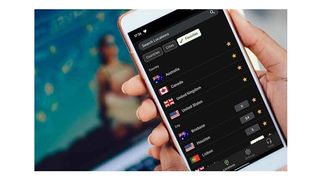
How private and secure is IPVanish?
IPVanish is based in the US, which could be a red flag for potential users. The US is governed by some laws that require companies to keep client information for the purpose of law enforcement. However, IPVanish has promised it doesn't store or share these records with anyone.
To prove this, IPVanish allowed a third-party audit of its services. This investigation, conducted by Leviathan Security Group, found that IPVanish doesn't keep logs of any kind. Follow this link to read about the audit in full.
I also used the Blacklight privacy inspector to check out the IPVanish website to get a better idea of the provider's stance on privacy. The inspector found five trackers and ten tracking cookies (including Google, Facebook, and Microsoft). This isn't hugely unusual, but it is more than you'll find other services using. For example, Mulvad and Proton VPN don't use trackers at all.
Privacy isn't the only area where IPVanish shines. It also has a ton of features that secure your online activities. So, whether you're browsing the internet or sharing files with a colleague (torrenting), everything is encrypted using the industry-standard 256-bit AES encryption.
IPVanish supports both WireGuard, OpenVPN, and IKEv2; some of the best and safest protocols around. And unlike most VPNs, IPVanish users can both view and customize OpenVPN connections. For example, with the OpenVPN Scramble tool, you can conceal your traffic and make it easier to connect to a network when facing VPN restrictions. Users can also select one of two OpenVPN ports to optimize their setup.
IPVanish has promised it doesn't keep or share logs with anyone. To prove this, IPVanish allowed a third-party audit of its services.
While the IPVanish apps on most platforms come with a variety of privacy-protecting features, what you'll get depends on the client that you're using. The Windows client is probably best-equipped and comes with IPv6 and DNS leak protection and an automatic kill switch, which will immediately disconnect your computer from the internet if the VPN cuts out.
Since any VPN provider can promise leak protection, I decided to test IPVanish's claims with Do I Leak, a DNS leak test. To my satisfaction, it confirmed that my DNS traffic and identity were safe.
Likewise, iPhone VPN users can quickly configure IPVanish to start automatically when connecting to public Wi-Fi or stay turned off when joining a safe network (like your home, work, or a friend's connection). This means you can leave the VPN to switch itself on and off most of the time, and rest assured that your privacy is always protected.
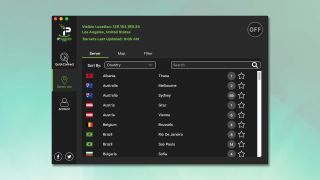
During my tests, I found a concerning server configuration issue that could have left users more vulnerable to a security breach. However, it was fixed shortly after notifying IPVanish of the issue.
I didn't see any other hiccups, and the fact IPVanish was so willing and quick to fix a problem gives me confidence in its overall VPN security.
All in all, it's refreshing to see a VPN provider with the courage to put itself through the scrutiny of an independent audit and request user feedback when issues crop up. While IPVanish is by no means the first to do so, it's always good to see.
One more perk of using IPVanish VPN is that it comes bundled with VIPRE, an antivirus program. VIPRE looks for and blocks malware so your computer doesn't get infected with viruses, rootkits, ransomware, and other threats. It isn't available for mobile versions, and it isn't the top antivirus solution, but it is a nice bonus.
How fast is IPVanish?
| Protocol | Speed result |
|---|---|
| WireGuard | 770 Mbps |
| OpenVPN | 230 Mbps |
IPVanish has consistently been pretty fast, but I tested it out to make sure it's maintained this standard. To measure the speed performance, I ran several benchmarking services—SpeedTest's website and command-line app, Cloudflare, and Measurement Lab.
I test from a UK data center and a residential US location, both using a 1 Gbps connection, and run each test five times with OpenVPN, then five times with WireGuard, and repeat the process a few hours later. It clocks in at 120 tests at a minimum, which gives me plenty of data to analyze for a clear picture of IPVanish's performance.
The VPN proved to be above average when using WireGuard—I saw top speeds of over 770 Mbps. Despite this being a decline from previous results of 960 Mbps, it's still very fast.
A similar improvement occurred during my OpenVPN testing, where speeds reached 230 from 180 Mbps. That's an encouraging leap, although it's still much slower than the 410 Mbps Mulvad recorded using OpenVPN or Surfshark's 640 Mbps. However, 230 Mbps is still well above average, and ideal for any browsing or HD streaming you'll be doing.
If you feel you need faster VPN connection speeds, look at Surfshark and TorGuard. Both clocked in at an impressive 950 Mbps when connected with WireGuard.
How good is IPVanish for streaming?
| Service | Test results |
|---|---|
| Netflix | Working (US, UK, JP) |
| Prime | Working |
| YouTube | Working |
| iPlayer | Working |
| Disney Plus | Working |
| 10Play | Unavailable |
| 9Now | Working |
| ITV Player | Working |
| All4 | Working |
IPVanish is a capable streaming VPN provider and had no problem unblocking Netflix in the US from our three testing locations. The VPN also accessed Netflix UK, Australia, and Japan. I had less luck unblocking Canada, however.
Overall, though, I saw an improvement in IPVanish's streaming performances as the provider managed to unblock platforms it struggled with the last time I checked, including Disney+. 10Play in Australia was the only one that it still failed to unblock.
Ultimately, IPVanish can access a pretty impressive spread of services. If some of your favorite shows are hosted on services that IPVanish struggles with, however, there are other VPNs that can help. ExpressVPN, NordVPN, Private Internet Access, and Surfshark unblock virtually anything you throw at them.
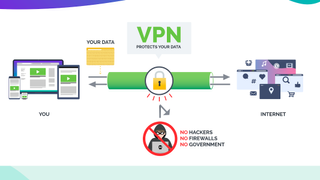
How good is IPVanish for torrenting?
IPVanish has very secure P2P support that uses the highest encryption available to make sure your information can't be deciphered if it is intercepted. On top of that, this VPN has a thoroughly tested kill switch and easy proxy setups.
There's no need to worry about picking a compatible server with IPVanish. All of its 2,000+ options are already P2P-friendly and, thanks to its no-logs policy, there's no history of transfers or digital communication that can be traced back to you.
The main reason IPVanish isn't listed among the top torrenting VPN services is because of its limited split tunneling. This feature lets you send specific files through the VPN while leaving others alone, helps secure your transfers, and increases connection and transfer speeds. However, it's only available to Android and Fire TV users, and I'd love to see it on desktop.
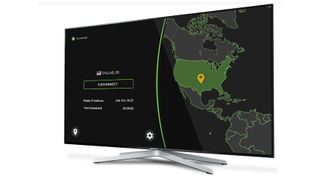
How good are IPVanish's settings?
IPVanish impresses with a feature-rich settings box. Here, you'll be able to switch between WireGuard, IKEv2, and OpenVPN TCP and UDP protocols, and even choose port 1194 or 443 for OpenVPN. This will hopefully boost any attempts to overcome small-scale VPN restrictions (like local Wi-Fi hotspots, not China).
Via the settings menu, you can also determine which server IPVanish defaults to when starting the client and configure the DNS and IPv6 leak protection. It's also possible to view OpenVPN logs and do some troubleshooting when problems occur.
Then, you have the auto-connect settings, which can instruct IPVanish to connect whenever it launches or if you connect to an untrusted network. IPVanish trusts ethernet and cellular networks automatically, but you can tell it not to.
I found that the kill switch isn't enabled by default, and I had to click through the settings until I found the one that switched it on manually. This setting isn't remembered between connection sessions, either, so you'll need to remember to enable the kill switch each time you launch the VPN.
When I put the kill switch to the test, the results were fantastic. IPVanish warned me right away with a desktop notification, regardless of the protocol I was using, whenever I broke the connection. It even helped me get reconnected without showcasing my real IP when I enabled the feature.
It's worth keeping in mind that the IPVanish kill switch is absolute. This means that if it's switched on, you won't be able to access the internet if you're not connected to the VPN. This can be frustrating, albeit very secure, and in an ideal world, I'd prefer a kill switch that doesn't cut the internet entirely whenever I disconnect.
IPVanish has tried to remedy this inconvenience with a kill switch button on the home screen. One click disables the feature, allowing you to use your normal connection temporarily before restoring the kill switch with another click.
How good are IPVanish’s desktop apps?
IPVanish's recent design update didn't change the overall function of the Windows app, but it did give the dashboard a cleaner look that's much easier to navigate. However, in order to achieve this, IPVanish stripped away some helpful information.
The VPN no longer displays a traffic graph or mentions protocols. Instead, you'll see a zoomable world map that pinpoints server locations and a sidebar navigation with icons that'll direct you to other parts of the app.
These additions have made the IPVanish app feel somewhat cluttered, but it is possible to hide the Connection Details panel and the map to keep things tidy. In fact, if you hide the map, the Windows app looks a lot like it did before the revamp.
Truth be told, the Windows VPN, Mac VPN, and Linux VPN clients do a good job of communicating their feature sets in a pretty clear way. You can connect to the nearest location by hitting the Connect button or using the map. Click and drag to pan, scroll the mouse wheel to zoom, and once you've decided on a location, simply double-click it to join.
Alternatively, you can browse the server list. It's packed with information and gives users the option to filter locations by country and city, select individual servers, and quickly view details like ping time and server load. A handy search box lets you type a city or country name to find specific servers, and with the Favorites system, you can add servers to a list for easy reference.
Mac users will eventually get the same combination of a map and connection details on their home screen, too—although this hadn't been implemented during my testing. I did get to check out the beta version, however. Ultimately, I found that the Mac app and Windows app both felt slightly cramped, but the ability to hide the panels does help free up some screen space.
There are a lot of useful core features on the Mac app, and users can flip between WireGuard, OpenVPN, IKEv2, IPSec, and L2TP, and configure IPVanish to connect or disconnect automatically whenever joining untrusted Wi-Fi and Ethernet connections. There's even a kill switch that'll keep your traffic and identity secure if your VPN connection drops.
It's worth noting that the map on the Mac app doesn't look or act like its Windows counterpart, and some settings aren't where you think they'll be. I'm hoping that these quirks will be ironed out when the app is revamped, but for now, it's still capable, quick, and more feature-rich than other Mac offerings.
How good are IPVanish’s mobile apps?
Like its desktop versions, the IPVanish mobile apps received a design update. When you open the IPVanish Android app, you'll see your current location on a map and a Connect button. Clicking it prompts a stunning "Connecting..." animation that adds some visual flair. The navigation bar isn't quite as show-stopping, but you can still use it to jump to the Settings, Locations, and Help screens with ease.
You can't choose your location via the map, unfortunately, but selecting the Locations button will bring you to a more traditional server list. You can connect to any of the listed cities with a tap, although I'd like to see some latency and ping figures displayed here (just like they are in the desktop apps). IPVanish also lets you curate a Favorites list for easy access later.
Connection times sit at a few seconds, and the Android app shows your new IP address and the duration of your connection. Other providers will display more information here, but the sleek, simple look works well enough.
The app revamp means that, if you need help, you can reach out to IPVanish Support from within the app (via the Help screen) rather than having to navigate to the website.
Digging into the settings, there are more options than you'll find with other providers, and IPVanish supports OpenVPN, WireGuard, and IKEv2 protocols. Depending on whether you want speed or stability, you can even choose between OpenVPN UDP or TCP connections, and use port 8443 when connecting to servers.
The Android app offers split tunneling, which lets users determine which apps do and don't use the VPN, and a guide to setting up a system-level kill switch. Not having a kill switch built-in to the app is a bit of a letdown from a privacy standpoint, and something I'd like to see implemented in the future.
Unfortunately, the Android app is also missing an auto-connect feature that'll spring into action when you connect to an untrusted cellular network. This feature is included in the iOS version, however, and plenty of other providers offer it as a staple part of their mobile apps.
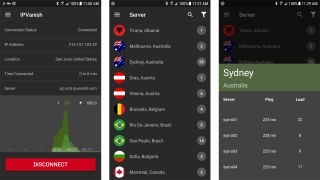
After the redesign, the IPVanish Android and iOS apps look very similar. The iOS version has a clean interface and a map screen, and connecting to a nearby location only takes a tap of a button. Plus, you can browse a configurable server list at your leisure.
The biggest differences are in the settings menu, where you'll immediately notice the lack of OpenVPN support. This isn't great news, though IPVanish cushions the blow by offering WireGuard, IKEv2, and IPSec, instead. Other features, like a selection of ports, the Scramble feature, and UDP/TCP are also missing.
With that said, I was particularly impressed by the On Demand feature, which connects you to the VPN automatically whenever you join an untrusted network. It's even possible to curate your own allow and deny lists, too, so the VPN knows which connections to protect and which are secure. Users can also tell IPVanish which domains they'd like it to protect.
All in all, other services offer iPhone VPNs with more tweaks and features, but IPVanish's app still covers all of the basics; it's easy to use, has a customizable location list, and knows when it should connect to keep you secure.
How good is IPVanish's support?
If something goes wrong with your VPN, IPVanish's Help Center should come in handy. It's full of articles and tutorials on just about every VPN subject you can think about—from setup, troubleshooting, and even billing questions—and you can search through these topics with keywords. I also like that the System Status area will let you know of any company-wide issues.
At first glance, it might look as though a lot of these articles are saying the same thing. There are 80 How To guides, for example, and 14 of those contain the same split tunneling advice. The difference between them is the platforms and services they cover. Providers like ExpressVPN and NordVPN offer more detailed, in-depth articles, and IPVanish doesn't always use up-to-date screenshots in their guides, which can make them harder to follow.
Some of the better IPVanish articles are the setup guides. Whether you're using Windows, Android, iOS, macOS, or Linux, you'll find information on how to complete the process with a minimum of stress. IPVanish can also help you out if you're using the VPN with Chrome OS or a router, and even Roku, Chromecast, and Kodi.
If you have a more specific question, or need clarification, it's worth contacting support via live chat. I sent a question to IPVanish about available protocols and which one to use for a specific job. Within a few minutes, I got a response that was helpful and to the point. I was especially relieved that I didn't have to jump through any hoops, like answering questions about my account, before receiving a reply. This is A+ support in my book.
And, uniquely in the VPN industry, IPVanish also offers phone support. I haven't tried this out, but if it's up to the standard of the live chat, I expect it to be worth having on-hand.

Should you buy IPVanish?
IPVanish does everything I expect from a reliable VPN. It bypasses geo-restricted websites, including the most popular TV streaming services, supports torrenting by allowing every one of its servers to be P2P compatible, and has top-notch security tools.
Support for WireGuard is another bonus, and quick and efficient live chat support means that help is only ever a click or two away. There are just a handful of glitches and usability issues that keep IPVanish trailing behind market leaders.
Sign up for IPVanish if:
- You want a VPN with a proven no-log policy
- You want malware protection
- You have a lot of devices to use at once
Avoid if:
- You're on a strict budget
- You need to watch television programs streaming in Canada or Australia
- You need the fastest connection speeds around


River is a Tech Software Editor and VPN expert at Tom’s Guide—helping take care of VPN and cybersecurity content, publish breaking news stories, and ensure all of our VPN testing is as accurate as possible. When they’re not following the ins and outs of the VPN world, River can be found plugged into their PS5 or trekking through the Welsh countryside in a very practical, but unfortunately unfashionable, waterproof jacket.
- Mike Williams
- Mo Harber-LamondVPN Editor
